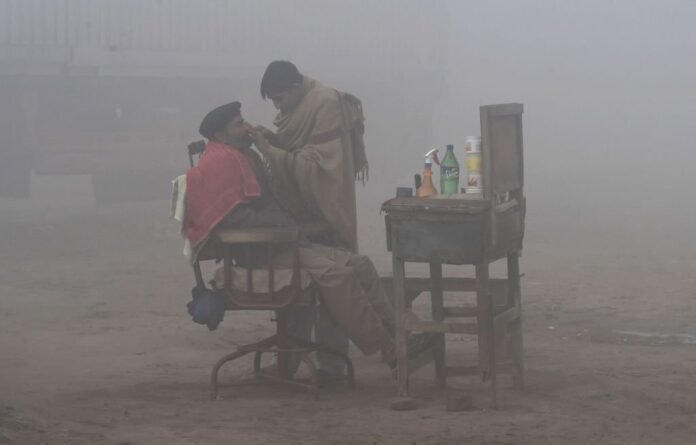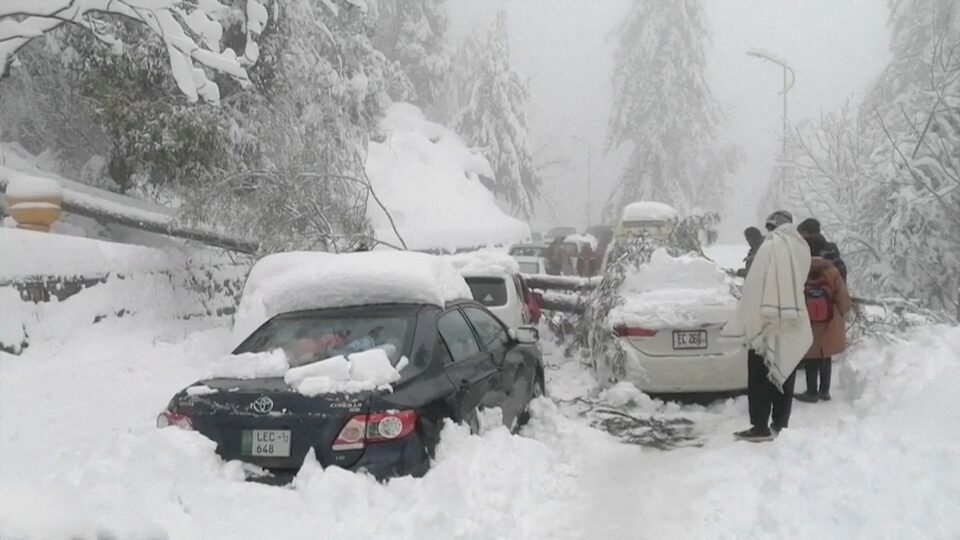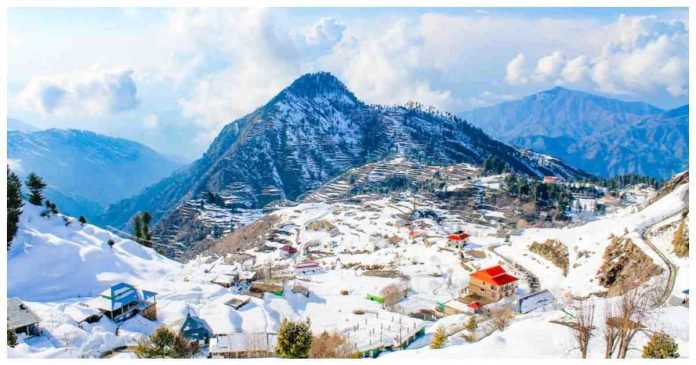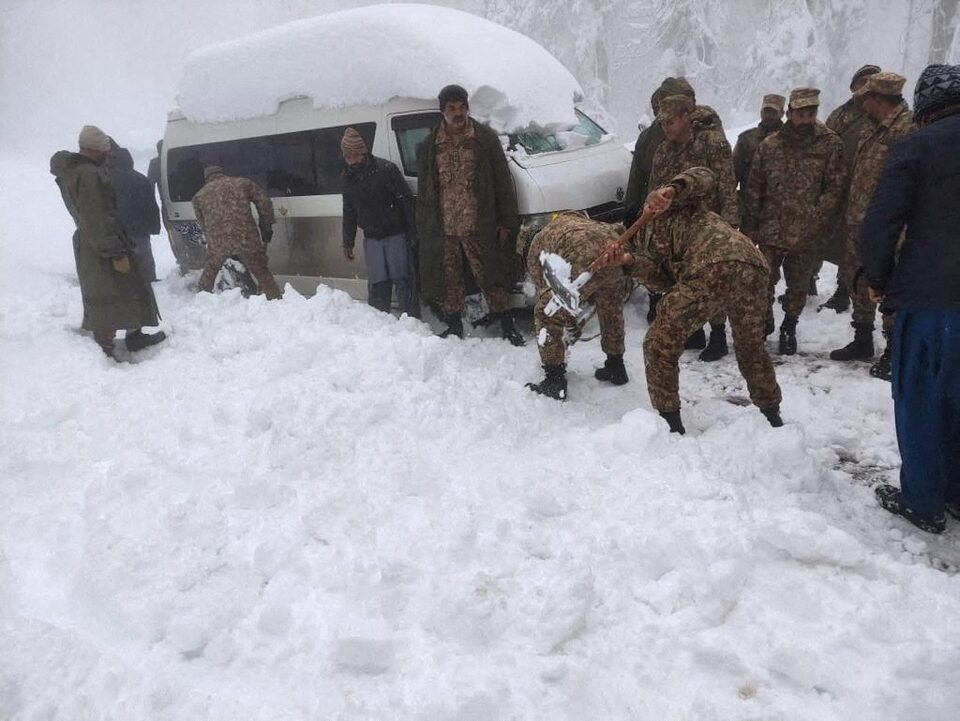Pakistan expects the harshest winter in history, as early reports from the Pakistan Meteorological Department (PMD) indicate extreme drops in temperature, record snowfall, and the possibility of energy shortages. The nation is preparing for a season unlike any other, where climatic shifts, La Niña effects, and global temperature anomalies could test the country’s infrastructure, economy, and resilience.
The upcoming winter season has already sparked concern among citizens and government departments.
Experts predict that December 2025 to February 2026 may bring the coldest weather patterns Pakistan has ever recorded.
From Gilgit-Baltistan’s snow-covered valleys to Sindh’s usually warm plains, every region may experience temperatures well below seasonal averages.
The Climate Context: Why Pakistan Faces the Harshest Winter Yet

Over the past decade, Pakistan has faced increasing climate instability. Once known for moderate winters, the country is now seeing erratic patterns due to global climate change and regional meteorological shifts.
The PMD’s latest analysis attributes the upcoming harsh winter to a combination of La Niña conditions, Arctic air incursions, and jet stream changes that funnel icy winds deep into South Asia.
Climatologists explain that a colder-than-normal Pacific Ocean surface creates atmospheric imbalances that redirect cold air masses toward regions like Pakistan.
These changes intensify cold spells, extend winter duration, and increase the likelihood of snow and frost across northern and central Pakistan.
In 2024, Pakistan experienced one of its wettest monsoon seasons, which raised humidity levels and disrupted the natural transition from summer to winter.
That lingering moisture could amplify the chilling effect once temperatures drop, creating foggy mornings and frost-filled nights across Punjab and Khyber Pakhtunkhwa.
PMD Forecasts: Early Snowfall and Record-Low Temperatures
The PMD’s winter forecast outlines alarming projections. Northern regions such as Murree, Skardu, Hunza, and Chitral may receive above-average snowfall, while plains including Lahore, Faisalabad, and Multan might witness temperatures dipping below 3°C.
For Karachi, the usually mild coastal city, predictions suggest cold waves that could push temperatures to 6–8°C, which is unusually low for the metropolis.
Meteorologist Dr. Ghulam Rasul, a former PMD director, stated that “Pakistan expects the harshest winter in history due to global atmospheric distortions.
The combination of low sunspot activity and strong polar wind patterns will bring freezing temperatures even to southern districts.”
Such patterns are not isolated. In the wider South Asian region, India and Afghanistan are also bracing for severe cold snaps.
The shared climate systems suggest that regional cooperation may become necessary for energy management and humanitarian aid.
Impacts on Agriculture and Food Security
Pakistan’s agriculture sector will likely face significant challenges. Farmers in Punjab and Sindh depend heavily on moderate winter temperatures for wheat germination, sugarcane growth, and vegetable production.
A prolonged or intense cold spell could damage crops, delay harvesting, and reduce yields.
Frost can destroy vegetable crops like tomatoes, potatoes, and onions, while extended fog reduces sunlight necessary for photosynthesis.
The National Agricultural Research Council (NARC) has advised farmers to adopt frost-resistant seed varieties and use protective coverings for sensitive crops.
Cold weather will also influence livestock. In regions like Balochistan and Gilgit-Baltistan, herders must prepare additional fodder supplies as natural grazing grounds freeze.
Veterinary experts warn of rising animal mortality if adequate shelters and heating measures are not provided.
The Energy Crisis Looming Over Pakistan

Every winter, Pakistan experiences energy shortages, but this year’s predicted cold could worsen the crisis. Higher gas demand for heating and cooking will pressure the already strained natural gas supply system.
The government anticipates a gas shortfall of nearly 800 million cubic feet per day (mmcfd) in January 2026.
To combat this, the Ministry of Energy plans to increase LNG imports and promote alternate energy sources such as solar and hydropower.
However, logistical hurdles, international price fluctuations, and infrastructure constraints could limit relief efforts.
The electricity sector also faces risk. Heavy fog may reduce solar generation, while water reservoirs might freeze partially in northern hydropower stations, decreasing power output.
Citizens can expect longer load-shedding schedules, especially in remote areas.
Urban Challenges: Health, Transport, and Air Quality
In major cities like Lahore, Islamabad, and Karachi, the harsh winter may worsen air pollution and smog. Cold air traps pollutants near the ground, leading to higher concentrations of particulate matter.
Health experts fear an increase in respiratory illnesses, particularly among children and the elderly.
Hospitals have begun stocking essential medicines for influenza, pneumonia, and bronchial diseases.
The Punjab Health Department is also planning public awareness campaigns urging citizens to wear masks, use humidifiers, and avoid unnecessary outdoor activities during smog peaks.
Transport networks will suffer too. Dense fog may cause flight delays, highway closures, and train disruptions.
The Motorway Police have issued early advisories about night travel restrictions and recommended the use of fog lights for all vehicles.
Humanitarian Concerns: The Plight of the Poor
The harshest winter in history could hit the low-income population hardest. In Pakistan’s northern districts, thousands of families rely on basic heating sources such as wood or coal stoves. With rising fuel prices, many cannot afford sufficient warmth.
Aid organizations like the Edhi Foundation and Pakistan Red Crescent Society have started winter relief programs to distribute blankets, warm clothing, and food parcels.
Government welfare departments in Punjab and Khyber Pakhtunkhwa are also considering temporary heating shelters for homeless individuals.
However, experts argue that such measures are short-term. Long-term planning, including energy subsidies for vulnerable families and improved housing insulation, is necessary to prevent widespread suffering during future extreme winters.
Environmental Implications and Global Warming Paradox
The phrase “harshest winter in history” might sound contradictory in an era of global warming, yet scientists emphasize that climate change intensifies extremes — both hot and cold. Rising global temperatures disrupt oceanic and atmospheric circulation, resulting in unpredictable weather behavior.
The World Meteorological Organization (WMO) reported that Arctic warming can destabilize the polar vortex, sending icy winds further south. Thus, while Earth warms on average, localized cold waves become more severe. For Pakistan, this means warmer summers and colder winters — a dangerous combination that stresses ecosystems and human settlements alike.
Environmentalists also warn that heavy snowfall could later trigger spring floods, as rapid melting fills rivers beyond capacity. Therefore, monitoring glacial regions will remain crucial even after winter ends.
Government Preparedness and Policy Response
To tackle the expected challenges, Pakistan’s government has launched Winter Preparedness Plans through the National Disaster Management Authority (NDMA). These include:
- Establishing emergency response centers in northern areas.
- Pre-positioning rescue teams and snow-clearing equipment.
- Stockpiling medical and fuel supplies in high-risk zones.
- Coordinating with provincial governments for energy rationing and public advisories.
The Ministry of Climate Change is also collaborating with international partners for early-warning systems and climate modeling improvements. These initiatives aim to minimize loss of life and economic damage as Pakistan braces for the record-breaking cold.
Public Safety Measures
Authorities have issued guidelines urging citizens to prepare for the season. These include:
- Insulate homes using plastic sheets, curtains, and rugs to retain heat.
- Check gas heaters for leaks and ensure proper ventilation.
- Stock emergency supplies, including blankets, batteries, and non-perishable food.
- Stay updated with PMD weather bulletins via radio and social media.
- Drive cautiously during fog and icy conditions.
Community-based awareness campaigns will play an essential role, especially in rural areas where communication networks are weak.
Economic Outlook: Winter’s Impact on Growth
The economic impact of this harsh winter could be widespread. Industries reliant on gas and electricity may face production slowdowns. Textile factories in Punjab and Sindh already fear reduced working hours due to gas load management.
The tourism industry, however, might see mixed results. While northern winter resorts like Murree, Malam Jabba, and Nathiagali expect an influx of snow-lovers, extreme cold could still disrupt travel routes and hospitality operations.
Economists believe that if managed properly, seasonal tourism could offset some of the negative effects on agriculture and manufacturing. However, failure to mitigate energy shortages may further strain Pakistan’s fragile economy.
The Road Ahead: Adapting to a Changing Climate

Pakistan expects the harshest winter in history — and it serves as a stark reminder that climate change adaptation is not optional. Experts stress the need for long-term resilience planning, including renewable energy expansion, smart agriculture, and improved infrastructure to withstand both heat and cold extremes.
Education and awareness remain vital. Schools and communities should learn basic disaster preparedness to handle both severe winters and heatwaves. Investments in climate research, urban planning, and sustainable energy can ensure the nation’s future stability.
FAQs: Pakistan Expects Harshest Winter in History
What factors are causing Pakistan to face the harshest winter in history?
Meteorologists link this winter’s intensity to a rare combination of La Niña, polar vortex instability, and reduced solar activity. These factors work together to push freezing air southward, resulting in unusually low temperatures across Pakistan.
How can citizens prepare their homes for the expected extreme cold?
People can prepare by sealing window gaps, using heavy curtains, layering carpets, and maintaining safe ventilation for gas heaters. Storing essentials like blankets, dry food, and first aid kits also helps households manage during extended cold spells or power cuts.
Which regions of Pakistan will experience the most severe effects?
Northern areas such as Gilgit-Baltistan, Chitral, Murree, and Swat will likely face heavy snowfall and freezing conditions. Meanwhile, plains in Punjab and Khyber Pakhtunkhwa may experience frost, and even coastal regions like Karachi are expected to see unusually low temperatures.
What impact could the harsh winter have on Pakistan’s economy?
The cold wave could disrupt agriculture, reduce industrial output due to energy shortages, and slow down transport logistics. However, tourism in snowy regions might see a temporary boost if roads remain accessible and safety measures are ensured.
What long-term solutions can Pakistan adopt to handle future extreme winters?
Experts recommend investing in renewable energy, improving home insulation, and upgrading weather forecasting systems. Promoting climate education and sustainable infrastructure can help the country adapt to both harsh winters and hotter summers in the coming decades.
Final Thought
As Pakistan expects the harshest winter in history, the nation stands at a crossroads between vulnerability and resilience. The warnings from meteorologists are not merely forecasts — they are calls for preparation, innovation, and unity.
From policymakers to citizens, everyone must act responsibly to ensure that the winter of 2025–2026 becomes not just a season of cold, but a testament to Pakistan’s strength and adaptability in the face of climate adversity.






